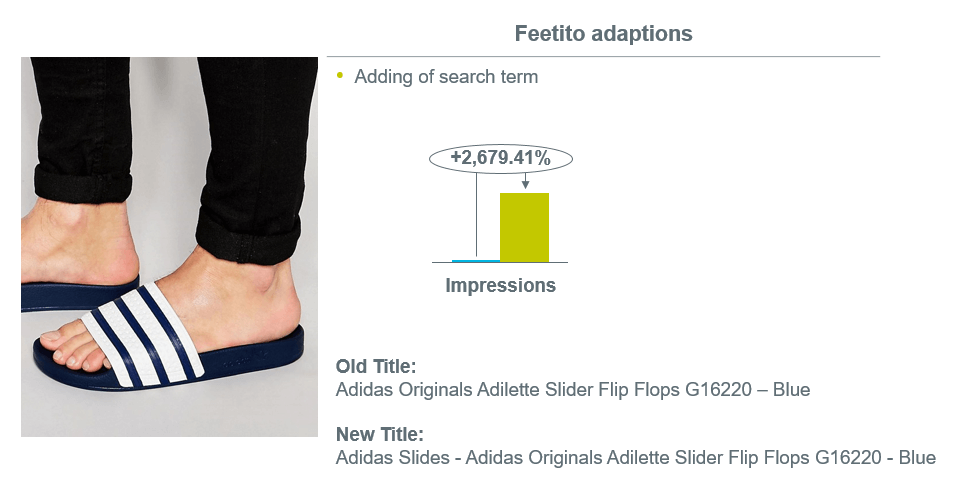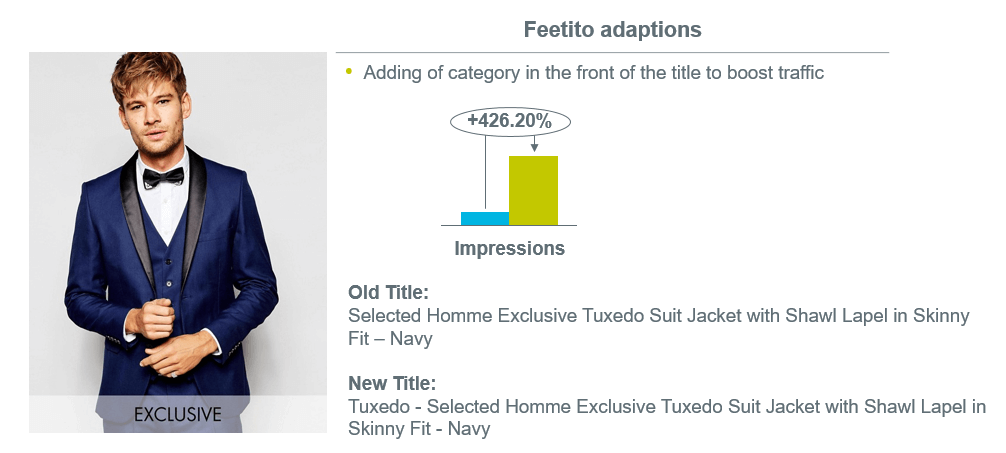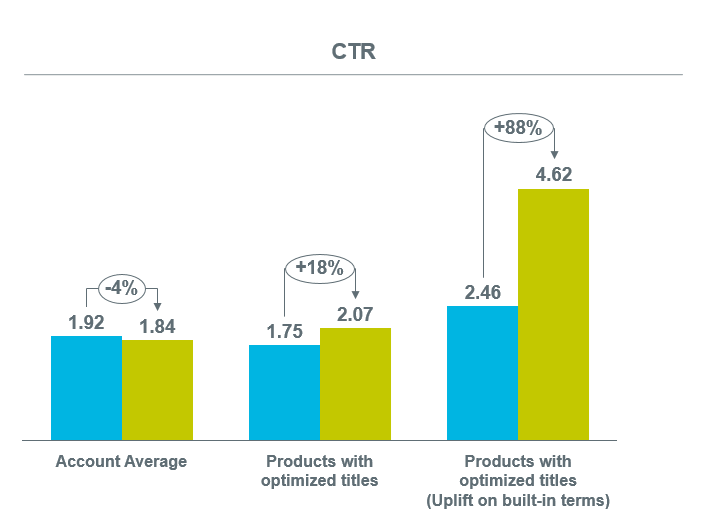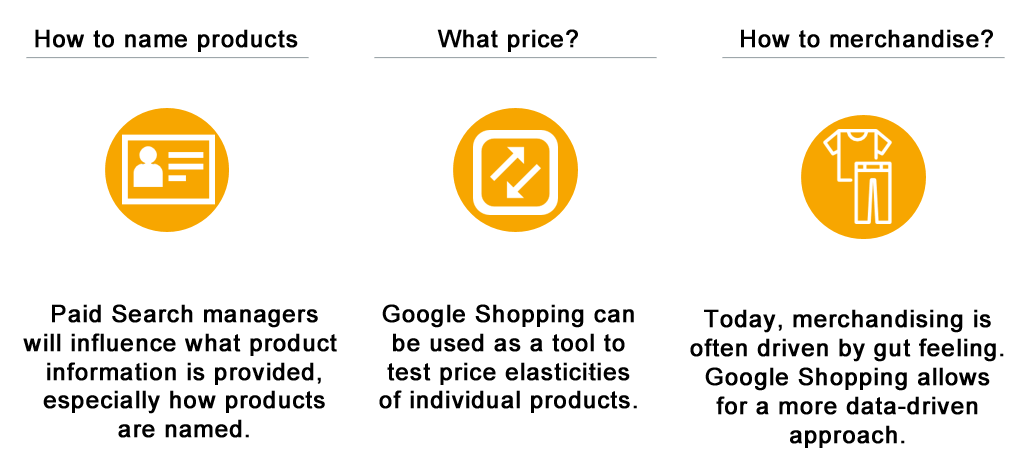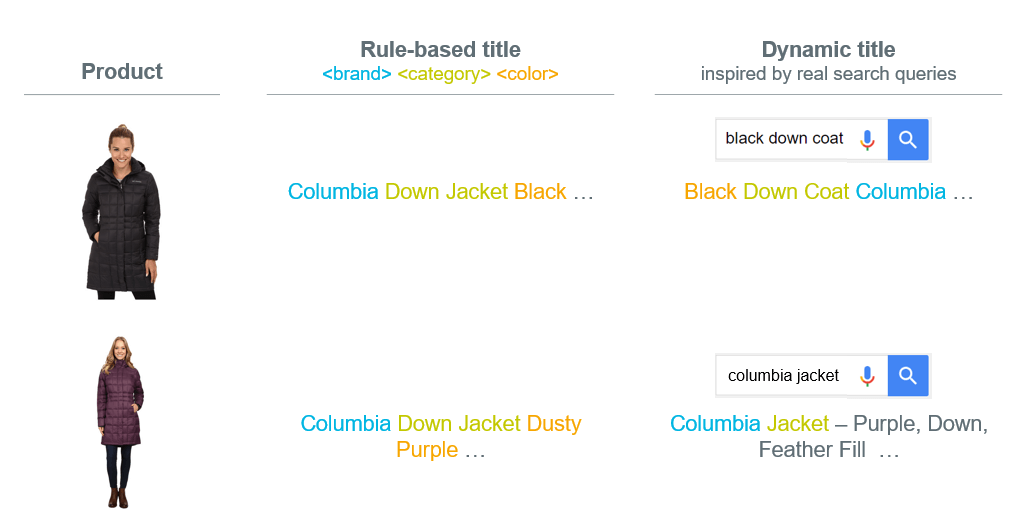Google Shopping feed optimization: Speak your customers’ language and write more compelling product titles
Product titles are among the most important factors influencing the performance of your Google Shopping campaigns. Contributor Andreas Reiffen shares data on how to optimize them.
Product Feed optimization is key to any successful Google Shopping campaign. Your product titles are one of the most important factors in whether or not Google will think your ad is relevant to the user’s search query. Not only that, but a good product title will entice more shoppers to click on your product.
Providing all the required data in the right format according to Google’s product data specification is mandatory, of course. But to make the most of Google Shopping, e-commerce retailers have to apply more advanced techniques to optimize and enhance their product feeds.
Previous experiments have shown that product titles have a major influence on performance, while other fields — like the product description or the Google product category — have little or no influence.
To give you some practical advice on how to effectively optimize product titles, we at Crealytics (my employer) tested how Google Shopping reacts to changes in titles.
Test setup
We selected 136 products, which we observed over a six-week period. Since it’s technically not possible to properly split-test alternative titles by showing two different versions of the same ad simultaneously to different people, we had to compare two different time periods.
After three weeks, we changed the titles and analyzed the impact of the change over the subsequent three weeks. Unfortunately, 62 products ran out of stock during our experiment and so had to be excluded from the analysis, which we performed on the remaining 74 products.
Examples of optimized products
To optimize our product titles, we added very specific, keyword-rich terms in front of the existing product title. We chose these terms from Google’s Search Query Report and matched the most popular search terms with the relevant products in our feed.
In some cases, we added a product search term to the existing product title:
In other cases, we added the product category to the existing product title:
And in some cases, where the original product title was quite short, we added a search term, as well as the size and gender focus of the product.
In every instance, our impressions rose dramatically!
The impact of optimizing product titles
Because we were comparing two different time frames, we needed to make sure that the timing wasn’t responsible for any of the performance changes we saw. To do this, we also analyzed the total performance of all the products.
On average, there was a slight decrease in CTR of 4 percent across the entire Google Shopping account. However, the products with optimized, more keyword-rich product titles saw a CTR uplift of 18 percent.
Since each product was optimized for a specific, highly relevant search query, we also took a look at the CTR uplift of the exact query match to the term we added. For example, if the term we added was “Adidas Slide,” we checked the CTR for queries that included exactly “Adidas Slide.” For these “built-in queries,” we saw a CTR increase of 88 percent!
So, it’s pretty clear that having a good product title can get you more clicks. A lot more, in fact.
How to optimize product titles
To figure out which terms we should add to our product titles to optimize performance, we first need to understand how Google’s algorithm chooses which products to display to the searcher. And once we know that, we need to know which search terms our audience is using to find our products.
Understand Google’s matching algorithm
We know from previous tests that Google’s algorithm considers the words at the beginning of the product title to be the most important factor when it’s selecting which ads are most relevant for the search query. The word order also seems to matter, so that “green shoes” is not exactly the same as “shoes green.” That means you want to make sure you match the most popular search query exactly when you’re adding to your product titles.
In addition, Google struggles when comes to matching synonyms. Some people might search for “party dress” while others search “evening dress,” but they all are actually looking for the same type of product.
Though Google tries, it often doesn’t understand these synonyms and does basic string matching. That means that if you have a range of fancy dresses, you want to use different descriptors (party, evening, fancy, nice) across the category to make sure you cover all your bases.
First normalize, then include your customers’ language
The first step in creating a good Product Feed is to provide a keyword-rich, normalized product feed. Google recommends you include the brand, product name and basic product characteristics like model, color and size.
Most Feed Management tools will do a great job of giving you a solid, rule-based Product Feed from which to start optimizing.
Once you’ve got the basics right, you can move on to more advanced optimization steps like including the right search phrases in the right Product Titles by overwriting select normalized titles.
To come up with our new title suggestions, we used a tool we built internally, Camato, which we specifically built to automate this sort of dynamic product title optimization. Feed management tools can then pull the optimized titles through an API to replace the old titles.
With a bit of effort, you can replicate the work our tool does manually by accessing your AdWords Performance Report and identifying popular search terms that are relevant to your products.
Here’s how:
- Get the data: You’ll need a Search Query Report and a Product Performance Report from your AdWords Account.
- Get your product feed from Merchant Center.
- Identify words and combinations of words which are contained in search queries, but not in your Product Feed.
- Identify relevant products and change their Titles to reflect the correct search terms
Benefits of product title optimization
Product title optimization is an important part of scaling your Google Shopping campaigns. It can increase your impressions and help you grow shopping revenues.
By optimizing the product title, you can not only influence which products appear for which query, but also increase traffic and conversion by displaying ads which are more likely to reflect the searcher’s needs.
Opinions expressed in this article are those of the guest author and not necessarily Search Engine Land. Staff authors are listed here.
Related stories
New on Search Engine Land

